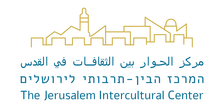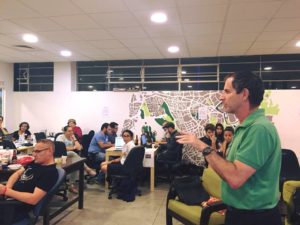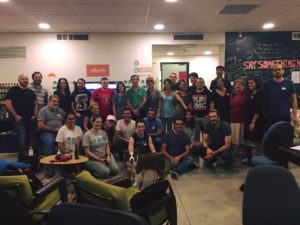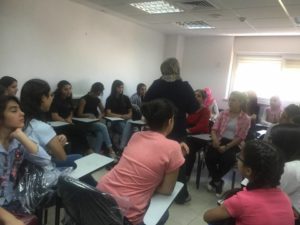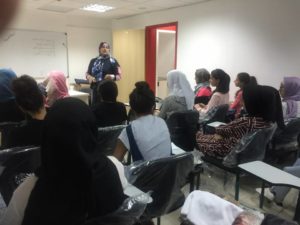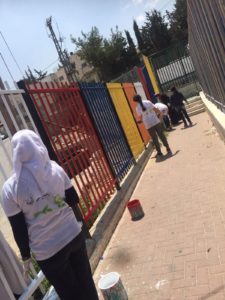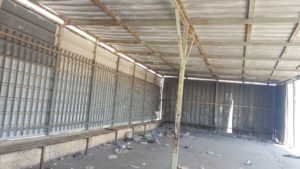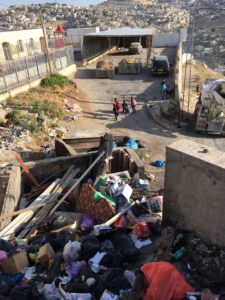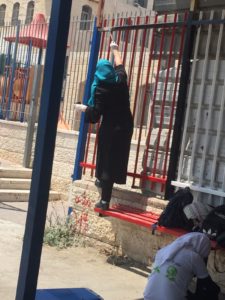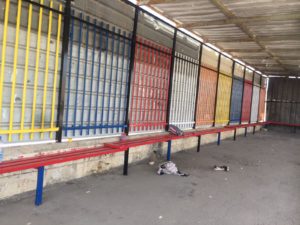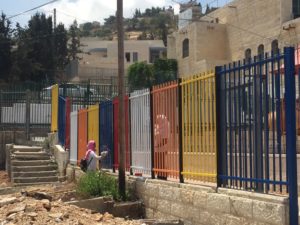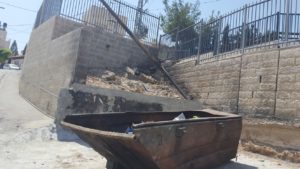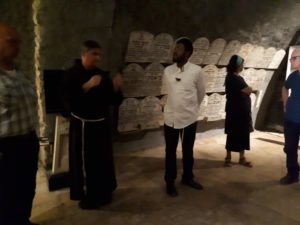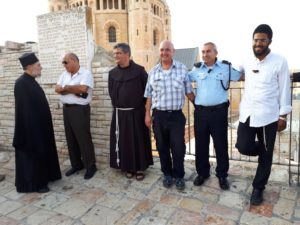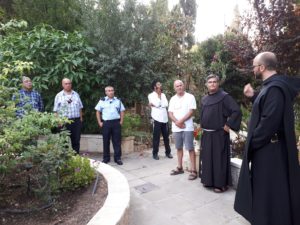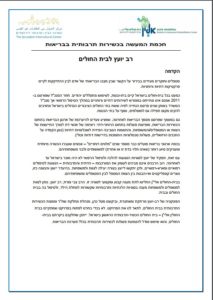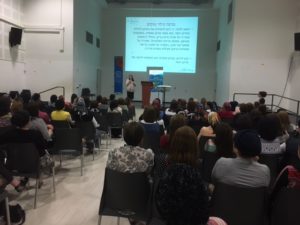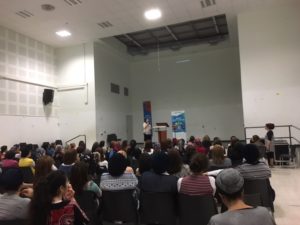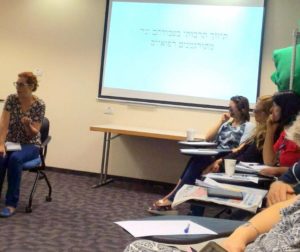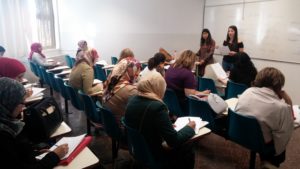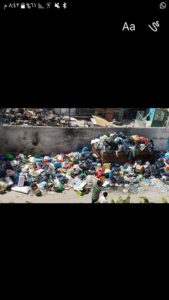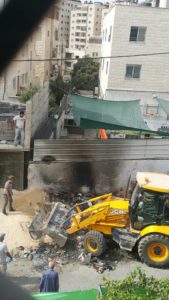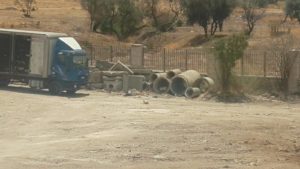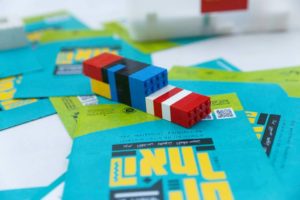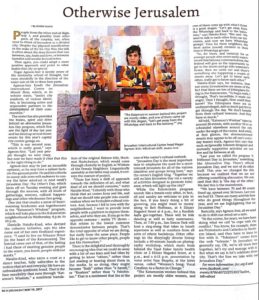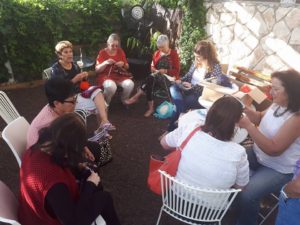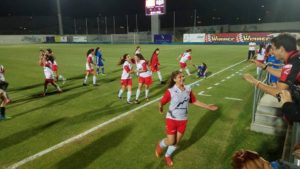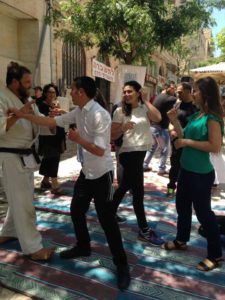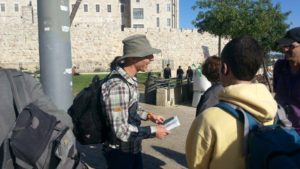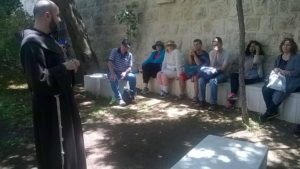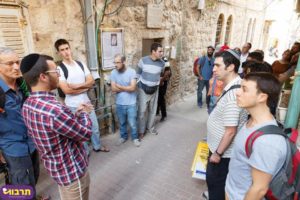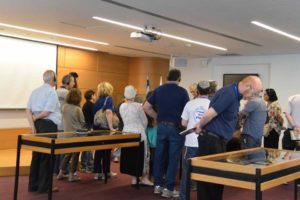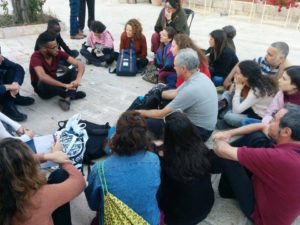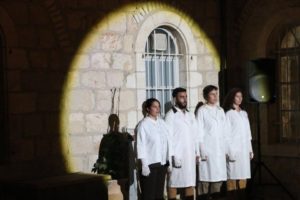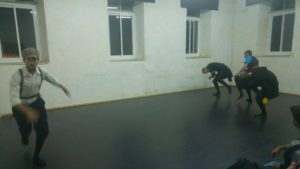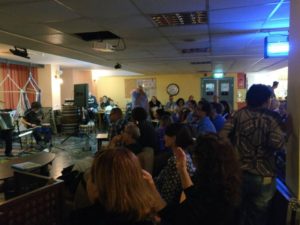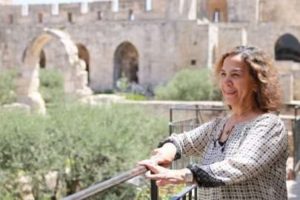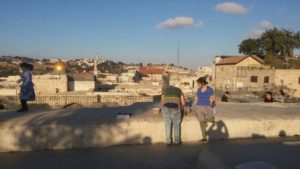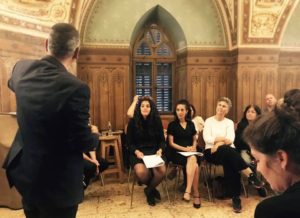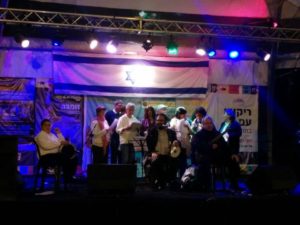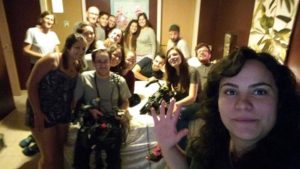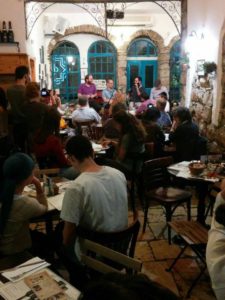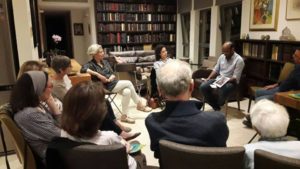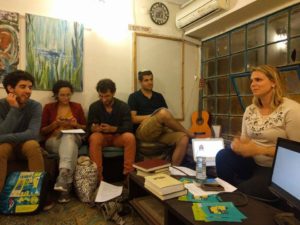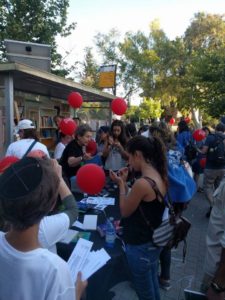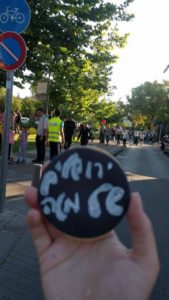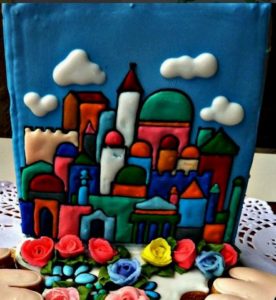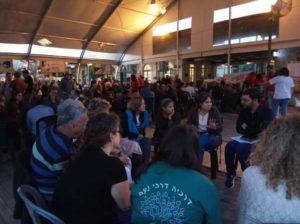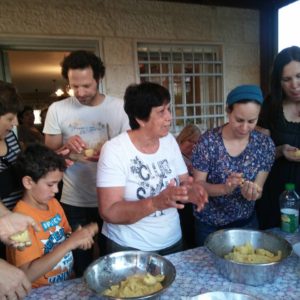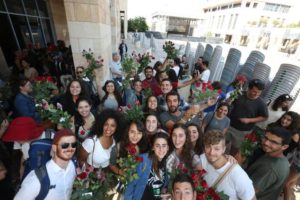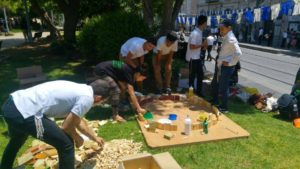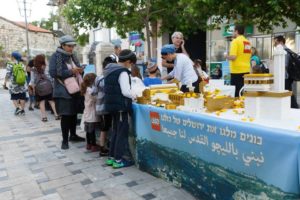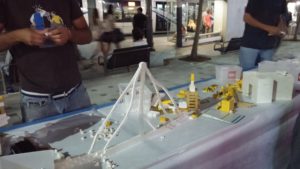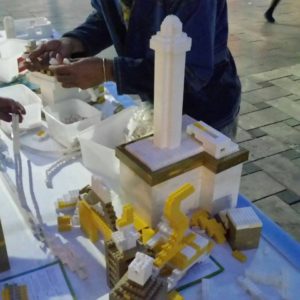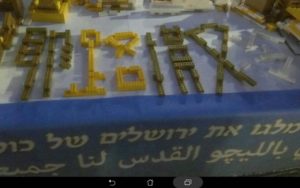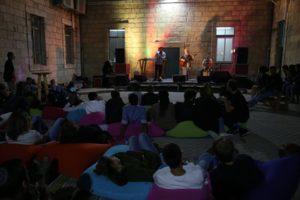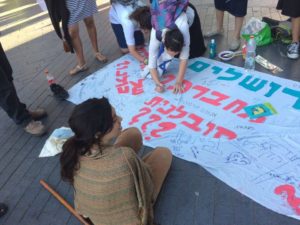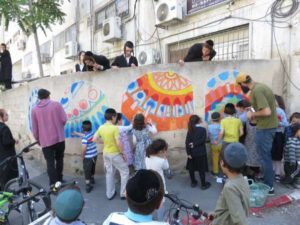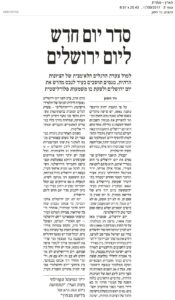Cultural Competency in the Police – Mentioned in Ha’aretz National Daily
We’ve been working with the Israel Police since 2015, and you can read about our work here and here. And it was covered on the Walla! Internet news site here.
Now, we’ve been mentioned in the national Ha’aretz daily newspaper, as the driving force behind developing cultural competency training in the entire Israel Police Force. Here’s the link to the article, and you can download a .pdf of the article here.
And here’s the full text:
Are Israel’s Police Really More Violent Toward the Ethiopian Community?
Are police in Israel and the U.S. inherently racist, or are they part of a bigger problem? A series of reforms undertaken by the Israel Police indicates a desire to change
Nomi Levenkron Sep 02, 2017 8:06 AM
Police officers aren’t born racist – they become racist in a society where racism is more deeply rooted than people will ever dare admit. The frequent violent encounters between police and minority groups – in Ferguson and Los Angeles, in Paris and London, in Tel Aviv, Jaffa and Jerusalem – all stem from the same thing: a racist society that tries to conceal its racism with condemnation of the police. We scapegoat the police while taking pride in our own clean hands.
The encounter between police and minorities has been volatile since modern policing began, amid the many groups based on ethnicity, religion and sexual preferences. Processes of nation-building marginalized the Native Americans and Aboriginal Australians. European colonialism was disguised as a “civilizing mission,” which continued when the residents of the colonies arrived as citizens in the lands of the colonizers. The U.S. Civil War led to the de jure but not necessarily the de facto liberation of millions of slaves.
And the tens of millions of immigrants to the West at the end of the 19th century weren’t welcomed warmly since they were perceived as carriers of four kinds of undesirable baggage: dubious morals, crime, disease and imbecility. Many immigrants had problems finding work and housing, and therefore crowded into struggling neighborhoods. This geographic and employment segregation made it even harder to break down cultural barriers.
These processes led to mutual suspicion and sometimes hatred between minority groups and the police in Western countries. The police’s central role in protecting the regime and public order, especially during demonstrations, increased the potential for friction. The police’s perception that crime among minorities stemmed from cultural traits, not socioeconomic traits and discrimination, sometimes led to over-policing — as seen in unnecessary arrests and violence. And it also led to under-policing, stemming from neglect and indifference.
Police methods did not arise in a vacuum but rather in a society that was racist in innumerable ways, among them the restriction of groups’ access to jobs, welfare, education and health. Police activity was harsher in terms of the damage it caused to the bodies and freedom of minority people, but police racism was no different from the racism in the wider society.
This is the background for understanding the many violent disturbances among minorities against the police. These groups were sitting on a powder keg and were fed up with hegemonic society’s treatment of them. The police only lit the fuse.
At the 1969 Stonewall riots in Manhattan, the LGBT struggle began after police known for their homophobia raided a gay bar. The 1992 Los Angeles riots erupted after the police who beat up Rodney King were exonerated in court. The 2011 London riots began after the police opened fire on a 29-year-old black man, and at the beginning of this year in Paris a similar wave began after a young man from a banlieue complained that the police had arrested him for no reason, beaten him and raped him with a baton.
Often the police know they’re the scapegoat, even when they admit responsibility, as with the events that ignited the most recent riot. But that accompanies the underlying racism and socioeconomic discrimination. At a Milwaukee police press conference in August 2016 after the police’s shooting of a young black man provoked riots, Sheriff David Clarke said: “Police use of force serves as an igniter — there’s no doubt — but to an already volatile mix of urban pathologies, failed urban policy that exacerbates inescapable poverty, failing public schools, inadequate parenting . Stop trying to fix the police. Fix the ghetto.”
In Israel, similar things happened after the establishment of the state, and the pretenses of creating a melting pot dissipated rapidly. We loved the immigration, not the immigrants. The Moroccans became an object of fear, the Germans scorn, the Yemenites pure paternalism (as in the kidnapping of Yemenite children).
Immigrants demonstrated in cities and transit camps against their treatment, but it was only the encounter between stevedore Yaakov Elkarif and two policemen in Haifa’s Wadi Salib neighborhood in 1959 that provoked a revolt by immigrants from North Africa, which included violent demonstrations, the blocking of roads and the setting of cars on fire. The appointment of a commission of inquiry and symbolic amendments to legislation were to no avail, and beneath the surface the embers continued to hiss.
The flames flared up again in the ‘70s when Israel’s version of the Black Panthers, representing Jews with roots in the Middle East and North Africa, demanded equality in education and employment. The racism against groups perceived as dangerous toward Jews was even harsher. The police stuck in the map flags dipped in the blood of members of the “minority” — the Israeli euphemism for Arabs. The 1956 Kafr Qasem massacre, the October 2000 riots in the Galilee and the 2017 Umm al-Hiran demonstrations are among the most notable incidents, but by no means the only ones.
A drop in the turbulent sea
If we probe our memories honestly, we must admit that Ethiopian Israelis’ problems neither began nor end with the police. The supreme heroism attributed to the bringing of this community to Israel stood in harsh contrast to the attitude toward them here. We labeled them “quiet and nice,” but we didn’t want them living near us. We refused to acknowledge them as Jews and put them in separate school programs. When they donated blood, we threw it in the garbage.
In a lecture by a policeman of Ethiopian origin in a law course I teach, a woman in the class asked him whether he feels safe enough to drink beer in the street after he goes off duty and dons civilian clothes.
The policeman smiled and said: “Are you asking me whether the police are racist? When I arrived in Israel I said that I would not live locked up in the Ethiopian community. I would have Israeli friends, an Israeli girlfriend, and an Israeli life. So yes, I did have an Israeli girlfriend. We went out for two years. But do you know what ‘we went out’ means? It means that not once did she invite me to her home.
“She was embarrassed. She didn’t want her parents to see her with an Ethiopian. After two years I understood what was going on and we split up. So are you asking me if the police are racist? I’ll answer you in the simplest way: You started it. We deal with the results.”
“A man is nothing but the image of his native landscape,” wrote poet Shaul Tchernichovsky, and by the same token, the policeman is the litmus test of Israeli society. Over-policing and under-policing developed gradually and led to a long series of clashes. More than once, a request to see an ID led to violence that at worst ended in an indictment for insulting public servants or interfering with a police officer. At best it ended with hard feelings of discrimination.
A 2016 Justice Ministry report noted that a large number of Israelis of Ethiopian origin – mainly minors – were being arrested and tried. For example, in 2015 the percentage of indictments against people of Ethiopian origin was 3.5 percent, compared with their 2 percent representation in the overall population. The report also showed that 18 percent of those held in the Ofek Prison for minors were of Ethiopian origin. The Tebeka legal aid organization for Ethiopian Israelis has received scores of complaints about police violence, but the group’s 2014 appeal to Public Security Minister Yitzhak Aharonovitch elicited only the laconic reply that “the police are not familiar with a phenomenon of police violence toward people of Ethiopian origin.”
Yet the community remained composed. Its young people joined the police but even there they didn’t find protection from the racism. Outside, police of Ethiopian origin encountered curses like “black zero” or “get out of here, it’s too bad you immigrated to Israel.” Inside the police, they came up against the glass ceiling that’s so familiar to every minority group. Joining the police, it seems, didn’t improve the police’s attitude toward the Ethiopian community.
The relative quiet ended in April 2015 when a video came out of the police beating Israeli soldier Damas Fekade and the attorney general closed the case. That event was preceded by a number of incidents, most notably the suicide of Yosef Salamseh; his family said he was abused by the police when he was arrested.
The video, however, was the last straw. In the days after its release, more than 1,000 people demonstrated in Jerusalem and Tel Aviv, blocking main roads. The demonstrations got out of control, especially in Tel Aviv: Dozens of demonstrators and police were injured, store and car windows were smashed, and the police used stun grenades and tear gas.
Why did the protest erupt then? There are a number of possible explanations. The members of the generation born in Israel no longer agreed to bow their heads to racism, and the police violence was against a soldier in uniform – a symbol of the consensus and integration. Apparently Black Lives Matter in the United States also influenced the nature of the protest.
Conspicuous by their absence were other Israelis. During the following week smaller demonstrations took place in Kiryat Gat, Ashkelon and Haifa, where there are many Israelis of Ethiopian origin. The fact that there was no protest in Netanya reflected the success of the police there. Still, it’s doubtful the last word has been spoken.
Many faces of racism
How is racism eradicated? Quite simply, it isn’t. Racism is too deeply imprinted in individuals and society; at most it’s possible to decrease it. But in the Damas Fekade affair, the seeds of change were sown. From the outside, community activists demanded from the police an acknowledgement of over-policing, an apology and preventive action.
From within, an officer of Ethiopian origin, Superintendent Shai Yasu, a lawyer, contacted the police’s head of human resources, Maj. Gen. Gila Gaziel. Yasu suggested that he be appointed the liaison to the community. Similar requests by him in the past were refused, but the police saw the attack on Fekade as a warning sign, while the need for a change was clear to the top command. The police academy, which had been established just a few months earlier, was part of the change; all training processes were reexamined, and the question was asked: What kind of policing is needed in a multicultural society?
Despite the harsh criticism of Police Commissioner Roni Alsheich after he said it was natural for the police to be more suspicious of Ethiopian Israelis, he has been the first commissioner to launch an extensive program for multicultural policing. Many changes have taken place over the past two years. For example, 29 community police officers, most of them of Ethiopian origin, have been assigned to heavily Ethiopian neighborhoods; they arrange meetings between community leaders and local police commanders. They also create unofficial bridges such as paint ball and soccer games with teens.
Cases that were filed in 2014 to 2016, some of them possible results of over-policing, underwent reviews. All police stations and commanders have taken courses on cultural appropriateness, which were developed with the Jerusalem Intercultural Center [emphasis ours]. This year the number of police officers of Ethiopian origin (1,085 out of about 30,000) is larger than their percentage in the overall population, and there is an increasing number of officers (27 in 2014 and 51 in 2017).
The glass ceiling is also melting a bit; two Ethiopian Israelis are now chief superintendents. Police are regularly briefed on multicultural policing before they go out on duty, and there are plans to enlarge the pilot project in which police wear body cameras and at every station someone is responsible for cultural appropriateness. Surveys in the Ethiopian community indicate a steep rise in trust in the police, from 18 percent in 2015 (versus 48 percent in the general population) to 25 percent in 2016 (also versus 48 percent). The main tool is a joint steering committee of the police and the community.
One member of the steering committee is Issachar Makonnen. He was Israel’s first Ethiopian lieutenant colonel, and he heads an organization that helps the community and prepares its young people for the army. In this respect, he lauds the police’s head of human resources, Gila Gaziel.
“But let’s not get ahead of ourselves,” he says. “There is still a gap between the orders from above and the field, and there is police violence. And there are police officers who beat someone up and then run to complain that they’ve been attacked. But I’m telling you unequivocally that it’s getting better. Today we have possibilities that we didn’t have before. I have an open door at the station commander’s office, at Gila Gaziel’s office and at Alsheich’s when necessary.”
When I recently completed a long day of interviews at the police academy, an officers’ graduation ceremony was going on. On stage stood 138 excited cadets; it was obvious that considerable thought had been invested in creating a culturally diverse cadre: seven of Ethiopian origin – four times their representation in the general population – as well as 10 Druze, one Muslim and two Christians. The speeches stressed the importance of diversity and multiculturalism. In the audience sat families and friends of every religion, origin and color – all of them shedding a tear of the same color.
At the end of the day, there seems to be reason for cautious optimism, even though there is still a long way to go. Are the police less racist than in 2015, the year Damas Fekade was beaten? It’s possible to say for certain only that the police are trying and investing money, manpower, thought, time and effort – which is a lot more than can be said about Israeli society. And anyone among us who has never committed the sin of racism has the honor of casting the first stone at the police.
Nomi Levenkron is a doctoral student at the Tel Aviv University Faculty of Law.
While this is a national program, we owe our deep gratitude to the Jerusalem Foundation, which has been our strategic partner in developing Cultural Competency in Jerusalem for the past decade.
